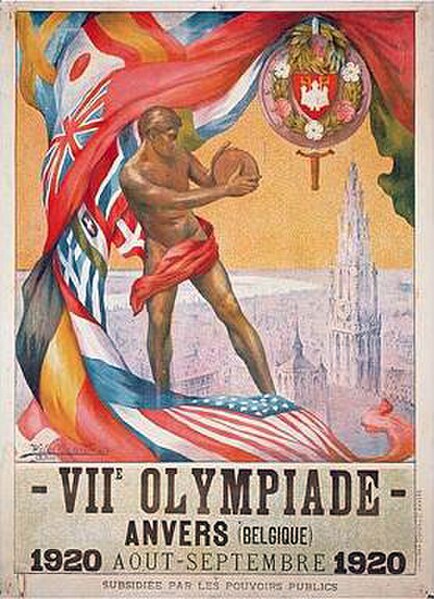Athletics at the 1920 Summer Olympics – Men's discus throw
The men's discus throw event was part of the track and field athletics programme at the 1920 Summer Olympics. The competition was held on Saturday, August 21, 1920, and on Sunday, August 22, 1920. 17 discus throwers from eight nations competed. No nation had more than 4 athletes, suggesting the limit had been reduced from the 12 maximum in force in 1908 and 1912. The event was won by Elmer Niklander of Finland, the nation's second consecutive victory in the men's discus throw. Armas Taipale, the winner in 1912, took silver to become the second man to win multiple medals in the event. Gus Pope took bronze, continuing the American streak of podium appearances at all six discus competitions to date.
Elmer Niklander (1912)
The discus throw, also known as disc throw, is a track and field sport in which the participant athlete throws an oblate spheroid weight — called a discus — in an attempt to mark a farther distance than other competitors. It is an ancient sport, as demonstrated by the fifth-century-BC Myron statue Discobolus. Although not part of the current pentathlon, it was one of the events of the ancient Greek pentathlon, which can be dated back to at least 708 BC, and it is part of the modern decathlon.
German 2012 Olympic champion Robert Harting.
Modern copy of the Diskophoros, attributed to Alkamenes
The main poster for the 1920 Summer Olympics
Discus (2 kg), World Athletics certified for competitions





